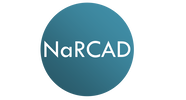Leveraging Relationships: New Mexico’s Approach to Team Building, Networking, & Gaining Access6/15/2021
An interview with Alisha Herrick, MPH, CHES, Program Manager and Detailer at the Center for Health Innovation (CHI). Alisha manages the academic detailing program, Understanding Provider Demands and Advancing Timely Evidence in New Mexico (UPDATE NM) at CHI. by Anna Morgan, MPH, RN, PMP, NaRCAD Program Manager Tags: Detailing Visits, Rural AD Programs  Center for Health Innovation https://chi-phi.org/ Center for Health Innovation https://chi-phi.org/ Anna: Hi, Alisha! Thanks so much for joining us on DETAILS today. We’re excited to chat with you about UPDATE New Mexico and the tips you have for building relationships. Can you tell us a bit about your program? Alisha: Absolutely! We provide evidence-based information and recommendations around chronic non-cancer pain management. We’re expanding the service to include information on medications for opioid use disorder so healthcare professionals can better serve their patients in our rural state of New Mexico. We offer rural healthcare providers, who may feel somewhat isolated, an opportunity for continuing education that typically might only be available in bigger cities. Anna: It’s wonderful that your team offers these resources – we know that there are often limited resources in rural areas. Detailing in rural areas also brings up additional challenges for the detailing team, but you do such a great job keeping your team engaged and feeling connected. Can you tell us a little about your team and the recruitment process?  Alisha: Geographically, New Mexico is the fifth-largest state in the country, but we only have 2 million people living here. All we do is network, network, and network. Whenever we're looking for detailers, we use our existing networks to talk to people and spread the word. Many people have heard the term six degrees of separation, but here in New Mexico, there’s only about two or three degrees of separation. Word travels fast when we share job opportunities with our partners. In terms of resources we’ve used for recruitment, we’ve adapted the generic job description on the NaRCAD website and circulated that throughout our network. The detailers we’ve hired all hail from different backgrounds, disciplines, and parts of the state. However, we make sure that they have a few common attributes – excellent communication skills, the time and resources needed to devote to the program, and the ability to share their perspective with others on the team. Anna: Along with recruitment, you’ve also put a lot of work into building your team. Can you share one of your approaches for building a strong and effective team? Alisha: One of the ways we keep our team engaged is through monthly meetings. Because of the diverse backgrounds of our detailers, there’s always a rich exchange of ideas and perspectives when we convene. We also invite our clinical support team so that the detailers have a chance to discuss the clinical content with experts. We connect, troubleshoot, and share insights - our entire team looks forward to these meetings.  UPDATE NM https://www.youtube.com/watch?v=IqMvWirUJxQ UPDATE NM https://www.youtube.com/watch?v=IqMvWirUJxQ Anna: Creating a space to share and exchange with peers is key, especially for such a unique job like detailing. Your team also recently worked together to create a commercial to help get the word out about academic detailing and continue to build relationships with the larger community. What was that process like? Alisha: Once the COVID-19 pandemic began, we knew we had to have another venue to capture our audience's attention in the virtual world and continue to spread the word about our academic detailing service. Near the end of 2020, we met with a couple of different video production agencies to learn more about creating a commercial and the resources required to make it come to life. We reallocated some marketing funds and picked a production team. We shared our vision of what we wanted to accomplish, outlined a few ideas, and they helped us refine a script. The fun part was putting together a cast. The detailer is played by one of our own detailers, the doctor is played by one of our clinical support team members, the patient is played by my fiancé, and the clinical staff member is played by our program coordinator. We didn't have to pay for our cast, which helped us cut down on cost; however, we did have to hire a dog for the commercial since I couldn’t bring my own due to the distance to the filming location! Overall, I’m very pleased with how it turned out.  Anna: You should be – it’s so well done. What other approaches have you taken to gain access to clinicians or get the word out about academic detailing? Alisha: Relationships are key in New Mexico, as they are in every other place. We have partner organizations working in the community on overdose prevention who have been tasked to prioritize marketing our detailing service to clinicians. We also met with our medical board and asked them if our service could qualify as a mechanism for healthcare providers to receive their required pain management CME. They supported our request and that ended up being a huge win for our program. In addition to being detailed, clinicians can also get free CMEs. On the marketing side of things, we've tried just about everything over the last year since we expanded statewide - postcards and flyers, newsletters, webinars, and social media. We’re now working on trying some more targeted approaches, like Google Advertisements. For example, if a provider is googling "free pain management CME in New Mexico," our program might pop to the top of the list. Anna: It’s clear that you’ve used approaches that align with your goal of building strong relationships throughout your state – I can’t wait to hear how your new approaches have worked next time we chat. Let’s pivot to our final question to wrap up today. What is one piece of advice you'd give other programs that are looking to replicate your program's success? Alisha: I would say don't get discouraged if you don’t see as much demand as you would hope for when you’re first starting out. Like everything else, it takes time. It takes time to educate providers on what and how this service is being offered. It also takes time to alleviate some of those misconceptions that this is “just too good to be true”. So be patient, talk to people, and listen twice as much as you talk to build those relationships. Anna: Thank you so much for sharing that, Alisha. It’s an honor to work and learn from you and your team. We appreciate all the tips you shared today an we hope to catch up with you soon! Have thoughts on our DETAILS Blog posts? You can head on over to our Discussion Forum to continue the conversation!  Biography. Alisha believes that communities should be engaged in developing solutions and driving decisions that affect them. Having lived in New Mexico for eight years, she deeply values the strengths, resiliency, and beauty of New Mexico’s communities. Alisha has facilitated CHI’s leadership team since its inception and together, they continue to challenge the status quo by creating an environment in which social and health conditions allow individuals, families and communities to thrive. As a program manager at CHI, she supports opportunities for critical linkages across partners; promotes shared decision making, researches and implements innovative frameworks, and works to address social and racial inequities. Alisha manages UPDATE NM (Understanding Provider Demands and Advancing Timely Evidence), CHI’s academic detailing program; serves as PI for the HRSA RCORP (Rural Community Opioid Response Program) Implementation project and directs the organization’s Project ECHOs for systems change. Some of her past professional endeavors include health education, training and teaching medical interpretation, ESL and motivational interviewing. Comments are closed.
|
Highlighting Best PracticesWe highlight what's working in clinical education through interviews, features, event recaps, and guest blogs, offering clinical educators the chance to share successes and lessons learned from around the country & beyond. Search Archives
|
